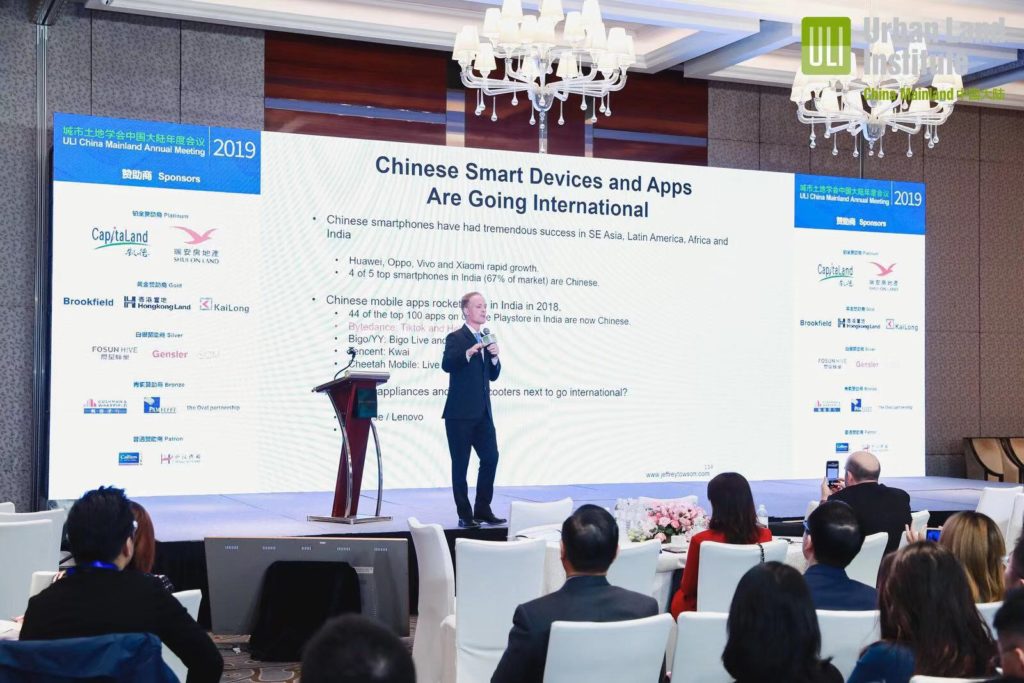I had a fascinating discussion with He Xiaodong of JD. He is the head of Deep Learning, NLP and the Speech Lab. And the Deputy Managing Director of JD AI Research. I did a podcast about this called Products with Personalities (Podcast 31) but I wanted to post some of his slides from our talk. He gave me permission to share them.
The talk was about the emergence of conversational AI, which is just a really cool capability with interesting implications. And it evolved out of one of the least discussed (and least sexy) areas of e-commerce, which is customer service.
Mismatched scale – and how JD built a customer service empire.
Digital businesses like JD (and Facebook and Ant Financial) have a tremendous ability to scale. Not just because they are made of bits and bytes, and not atoms. But also because platform business models grow using their users’ assets and effort, not their own. To grow Walmart, you need to open lots of stores. To grow JD, you just need lots of merchants to join and build their businesses on your platform. It’s the difference between a house you build for yourself and a castle the village builds for you.
But there’s a problem. Often, not all aspects of these businesses grow so easily. You can get mismatched scaling. And we see this playing out in the news virtually every day.
- Facebook and YouTube scaled to become the world’s largest media companies based on user generated comments and sharing. But content moderation, curation and censorship don’t scale very well. So Mark Zuckerberg is continually trying remove bad content from his site through mostly dysfunctional methods (AI, reviews, +30,000 content moderators). And he is continually getting in trouble for either not removing bad content (violence, nudity) or removing too much or censoring. It’s a problem based on two parts of the business having mismatched scaling.
- Alibaba has the same problem with fraud and fake goods. Everyone can sell on Alibaba easily and it scales beautifully. But stopping fraud and removing fake goods doesn’t scale well and there are also ongoing problems.
JD and Ctrip have a similar mismatched scaling problem in customer service. It turns out if you’re going to sell plane tickets and hotel reservations, you need tons of people available to handle calls about cancelled flights, hotel problems, etc. So Ctrip has tons of CSR’s (customer service reps) in Hongqiao and Nanjing. And JD has a similar CSR problem. Returns and service requests are one of their main touch points with their customers.
I can remember a meeting with the CTO of JD a few years ago and he kept mentioning that one of their biggest challenges was customer service. That it was difficult to hire and retain CSRs. And at the rate JD was growing, it simply wouldn’t be able to hire enough people. So there was a big tech focus on chatbots. They needed new tech tools.
One a side note, one of the interesting consequences of JD’s long-standing CSR challenge has been the transformation of Suqian into the customer service capital of China. Suqian, a small village north of Shanghai, is the hometown of JD founder Richard Liu. And JD launched their national customer service center in Suqian around 2010 with around 200 people. Today JD has over 10,000 people in Suqian and they report they have invested over 1.5B RMB in customer service in the past decade. They also have customer service operations in Changzhou and Chengdu, but most is in Suqian. This small village has grown to house the customer service centers of JD and other companies such as Dangdang, Xiaomi and Tuniu.
Conversational AI is about understanding the customers’ questions – and their emotions.
Over time, more and more of JD’s customer service requests have been handled by chatbots. But this is now evolving into something much more powerful, conversational AI. Which was what I talked with Xiaodong about.
Conversational AI is about communicating with the customer in multiple formats. It can be onscreen chat. It can be listening to spoken questions. It can be creating and providing content, such as photos and videos. It can be recommending products. It is multi-modal communication. All of which we can put under the banner of conversational AI.
Xiaodong broke the idea of conversational AI into solving two related goals. The first, obviously, is to understand the customer’s question. Do they need to return something? Did the package not arrive? Is there a defect? And so on.
But the other goal is to understand the customer’s emotions. Are they angry? Are they frustrated? Are they happy at the end of the conversation?
To solve both goals, the AI needs to engage in a positive way. It needs to answer your question quickly and accurately. But it also needs to show empathy. It needs to make sure you are satisfied. Ideally, that you are happy.
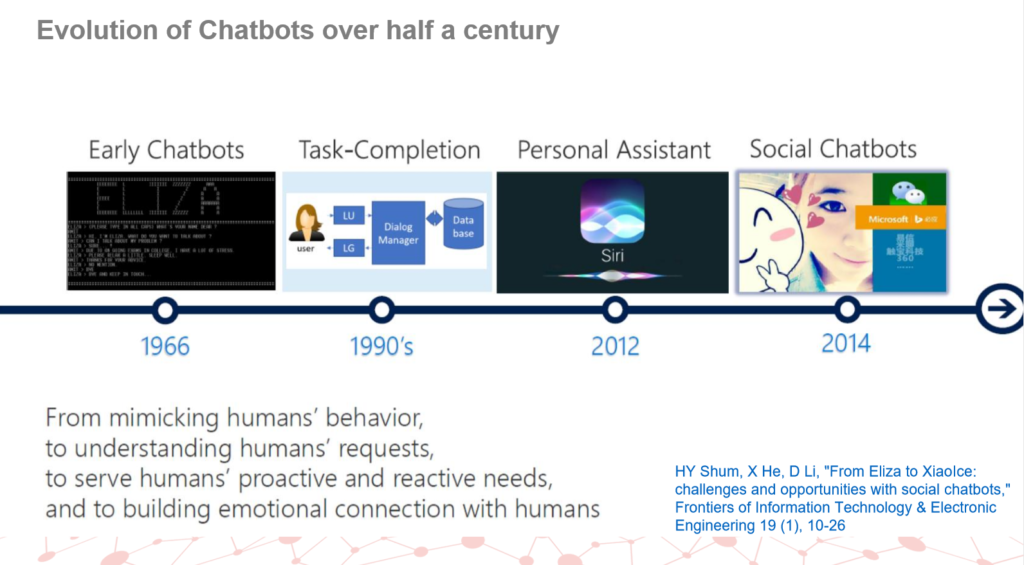
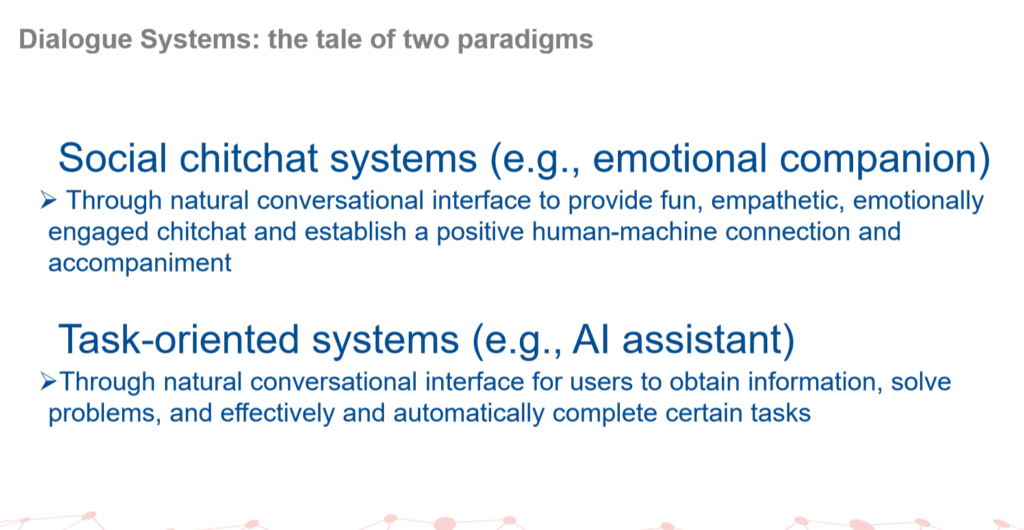
He Xiaodong talked about how Microsoft’s Xiaolce has the personality of a younger woman. It is an AI that can converse and engage in a way that is friendly. The personality is curious. It is someone people like to talk with. And it is active in the social world. It (she) knows the new terms. She knows what is popular right now. And she can create content, like songs.
So imagine a virtual personality, that can engage with voice, text, pictures, chat, gaming. And that can have ongoing interactions. That can remember previous conversations with you and everyone else. That can track how you are feeling now. And can remember what interactions put you in a good mood last time.
For customer service, converstaional AI is problem solving plus emotion and personality. And it’s an evolving into two-way conversations over time.
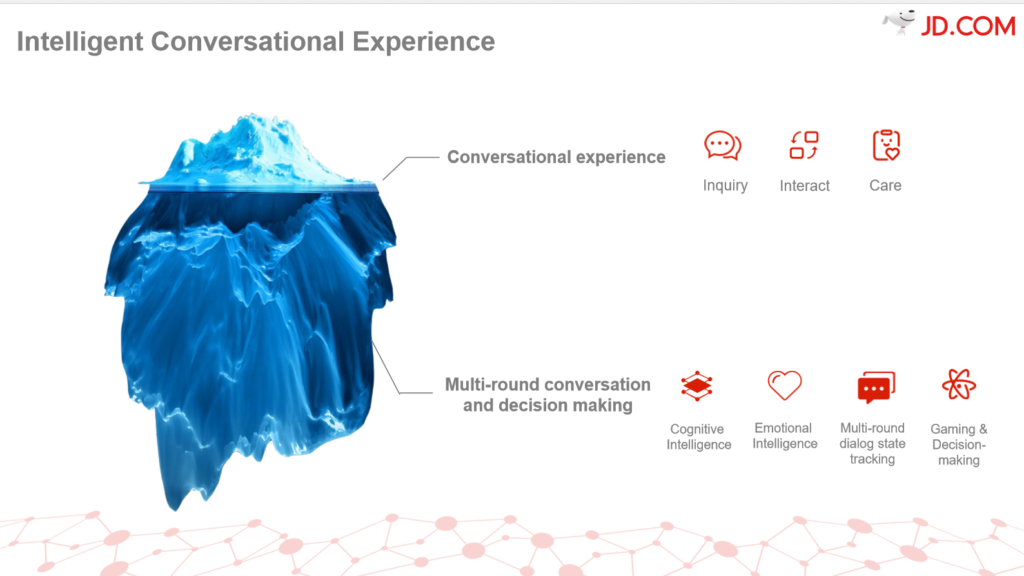


Convesational AI is much more than customer service. It’s about a new machine human interface. And Smart Sales is next.
So clearly, this is much bigger than customer service. Conversational AI is going to be applied in lots of areas. The next target is likely a sales.
Conversational AI will engage with you by voice, chat, text, photos and other types of content. It will try to get your attention. It will try to educate you about products. To engage with you. To understand what you are looking for. And to eventually make a sale to you over time.
Xiaodong mentioned this is like AlphaGo, the AI that could play games. It needs to see the situation and respond to your actions and reactions. And over time, it completes the sale (much like winning a game of Go over time). From hello to the close of a sale.
And really, this is about a new type of human-machine interface. This is an AI personality and capability that can be put into AI speakers. It can be put into tablets. In your car. In various webpages. And JD will likely make this available to merchants and brands to build into their online stores.


Products with personalities. And multimodal interactive AI assistants for everything.
From there, this could go to lots of places. One application for conversational AI beyond CSR and sales that really got me thinking is the idea of products having personalities and the ability to converse. So you could talk to the newly released Nike shoes and the product could tell you about itself. It could try to engage you and build a relationship. Maybe make a sale. Maybe just to build the brand. And it could have a unique personality.
Some corporate products might have a sterile formal personality. But some products might have outrageous personalities. The personality might be more interesting than the product. Just like every brand has a different webpage, every brand or product could have a different conversational AI. It’s pretty strange to think about.
Xiaodong talked about how conversational AI could be used by companies, products, and even individuals. We could all have own AI representatives that answer the phones for us.
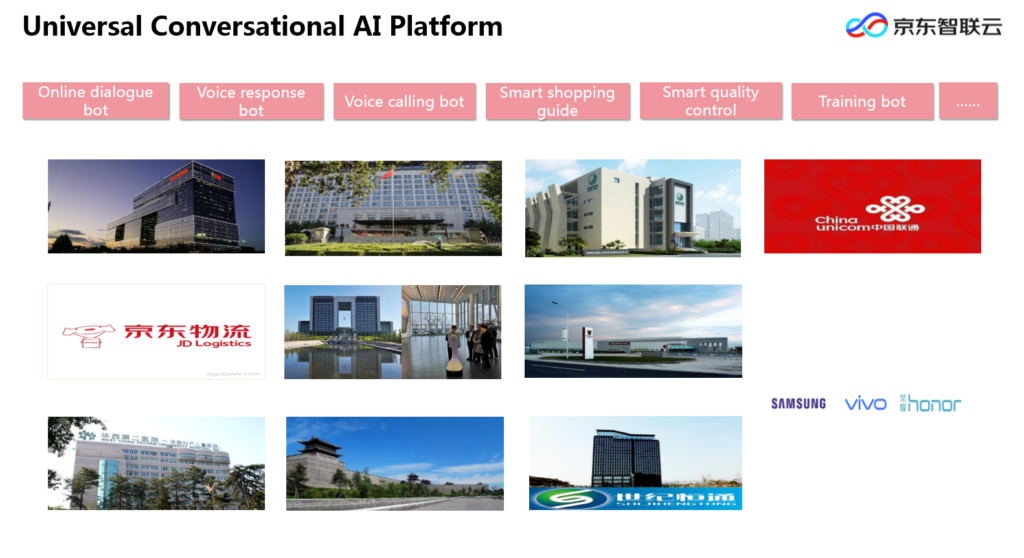
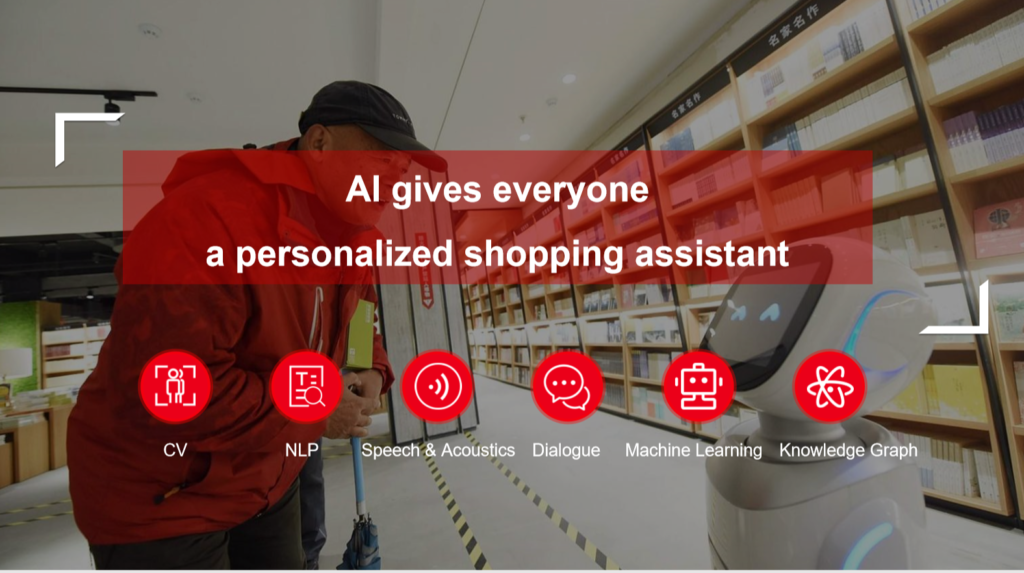
Overall, it was a pretty fascinating conversation. These above slides have some interesting details. I also spoke with another AI head at JD about how they are using AI in fashion. That is located in Part 2.
Cheers, -jeff
- Products with Personalities? My Interview with JD About Conversational AI (Jeff’s Asia Tech Class – Podcast 31)
- 3 Ways AI Is Transforming Fashion: My Interview with JD Vice President of Cloud & AI (Jeff’s Asia Tech Class – Podcast 33)
———
I write, speak and consult about how to win (and not lose) in digital strategy and transformation.
I am the founder of TechMoat Consulting, a boutique consulting firm that helps retailers, brands, and technology companies exploit digital change to grow faster, innovate better and build digital moats. Get in touch here.
My book series Moats and Marathons is one-of-a-kind framework for building and measuring competitive advantages in digital businesses.
Note: This content (articles, podcasts, website info) is not investment advice. The information and opinions from me and any guests may be incorrect. The numbers and information may be wrong. The views expressed may no longer be relevant or accurate. Investing is risky. Do your own research.
